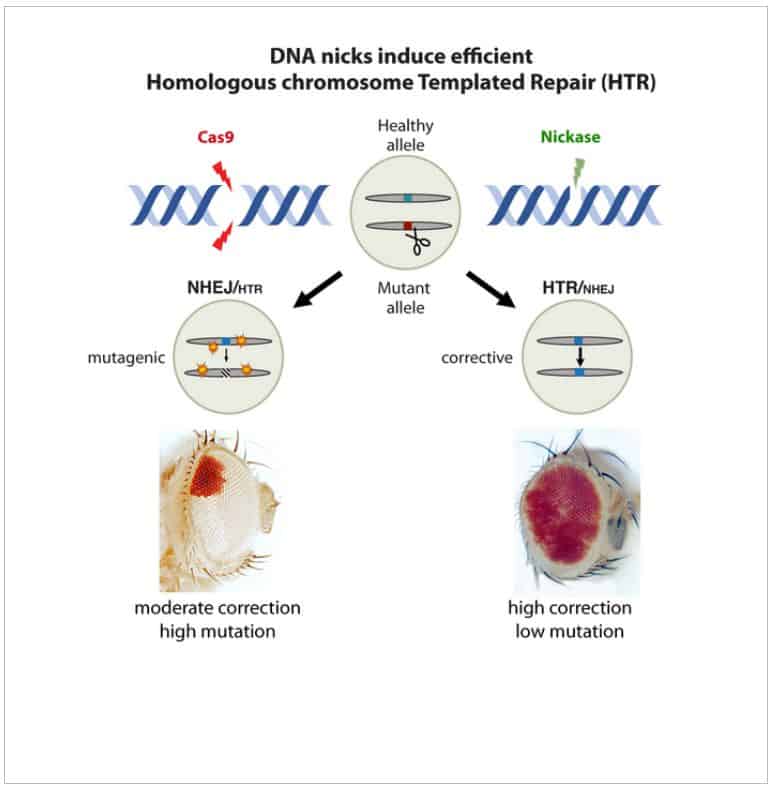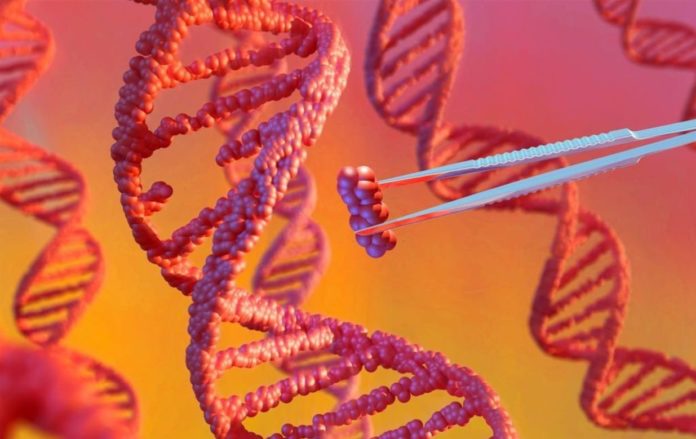One of the biggest problems in modern medicine is finding ways to treat genetic diseases that make people sick and weak. The introduction of CRISPR technology and advances in genetics research over the past ten years have given patients and their families fresh hope, yet the safety of these novel techniques still raises serious questions.
A group of biologists from the University of California, San Diego, led by Professor Ethan Bier and postdoctoral researcher Sitara Roy have described a novel, safe method that may one day be used to fix genetic defects in a paper published in the journal Science Advances today.

Their approach, which makes use of the body’s built-in DNA repair mechanisms, lays the groundwork for cutting-edge gene therapy approaches that have the potential to treat a wide range of genetic disorders.
People with genetic disorders often have different mutations in the two copies of genes they got from their parents. As a result, a mutation on one chromosome frequently corresponds to a functional sequence on the other chromosome. To take advantage of this fact, the researchers used CRISPR genetic editing techniques.
According to Guichard, the senior author of the work, “the healthy variant can be used by the cell’s repair machinery to correct the defective mutation after cutting the mutant DNA. Remarkably, this can be achieved even more efficiently by a simple harmless nick.”
Working with fruit flies, the researchers created mutants that allowed the creation of pigments in their eyes to allow observation of such “homologous chromosome-templated repair,” or HTR. These mutants initially had all-white eyes.
The identical flies, however, developed noticeable red patches across their eyes when the CRISPR components (a guide RNA and Cas9) were expressed. This was evidence that the cell’s DNA repair machinery had successfully reversed the mutation using the functional DNA from the other chromosome.
They next put their new technique to the test using Cas9 variants called “nickases” that only targeted one strand of DNA rather than both. Surprisingly, the researchers discovered that these nicks also resulted in a high-level restoration of red-eye color that was almost as good as that of healthy, normal (non-mutated) flies.
They discovered that the nickase had a 50–70% success rate for repair compared to merely 20–30% for dual–strand cutting Cas9, which also frequently produces mutations and targets other places throughout the genome (so-called off-target mutations).
Roy, the study’s principal author, remarked, “I could not believe how well the nickase worked—it was completely unanticipated.”
According to the researchers, the new system’s adaptability could be used as a model for correcting genetic defects in mammals.
Guichard added, “we don’t know yet how this process will translate to human cells and if we can apply it to any gene. Some adjustment may be needed to obtain efficient HTR for disease-causing mutations carried by human chromosomes.”
The new research builds on what the group has already done with “allelic-drives,” which are like gene-drives but use a guide RNA to tell the CRISPR system to cut out unwanted versions of a gene and replace them with a preferred version.
In contrast to more conventional Cas9-based CRISPR edits, the team’s nickase-based approach results in significantly fewer on- and off-target alterations, which is a critical aspect of their research. Additionally, they claim that multiple gradual, continuous nickase deliveries over several days may be more advantageous than a single, large delivery.
“Another notable advantage of this approach is its simplicity,” Bier added. “It relies on very few components and DNA nicks are ‘soft,’ unlike Cas9, which produces full DNA breaks often accompanied by mutations.”
According to Roy, “If the frequency of such events could be increased either by promoting interhomolog pairing or by optimizing nick-specific repair processes, such strategies could be harnessed to correct numerous dominant or trans-heterozygous disease-causing mutations.”
Image Credit: Getty
You were reading: “Soft” CRISPR Could Be A New Way To Fix Genetic Defects
